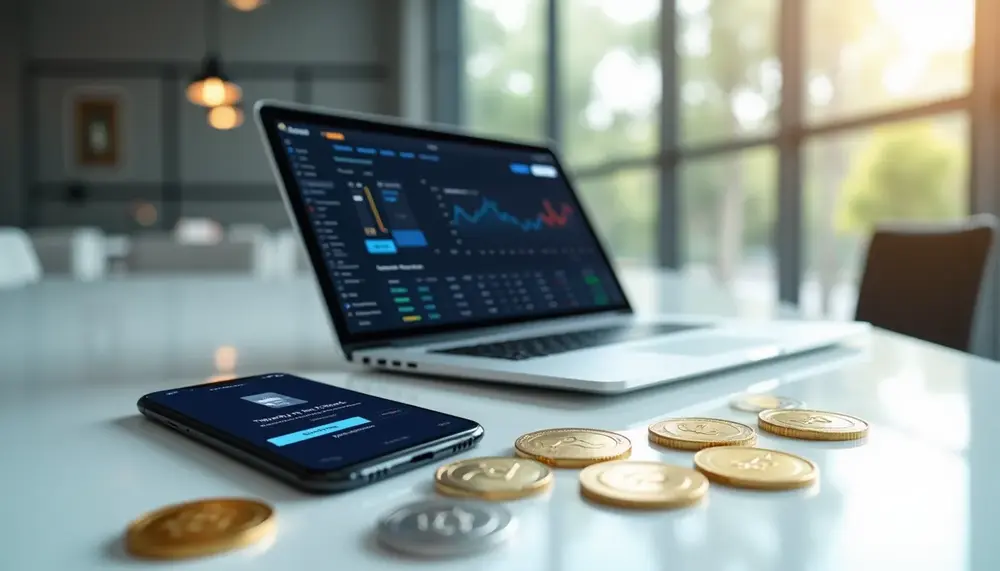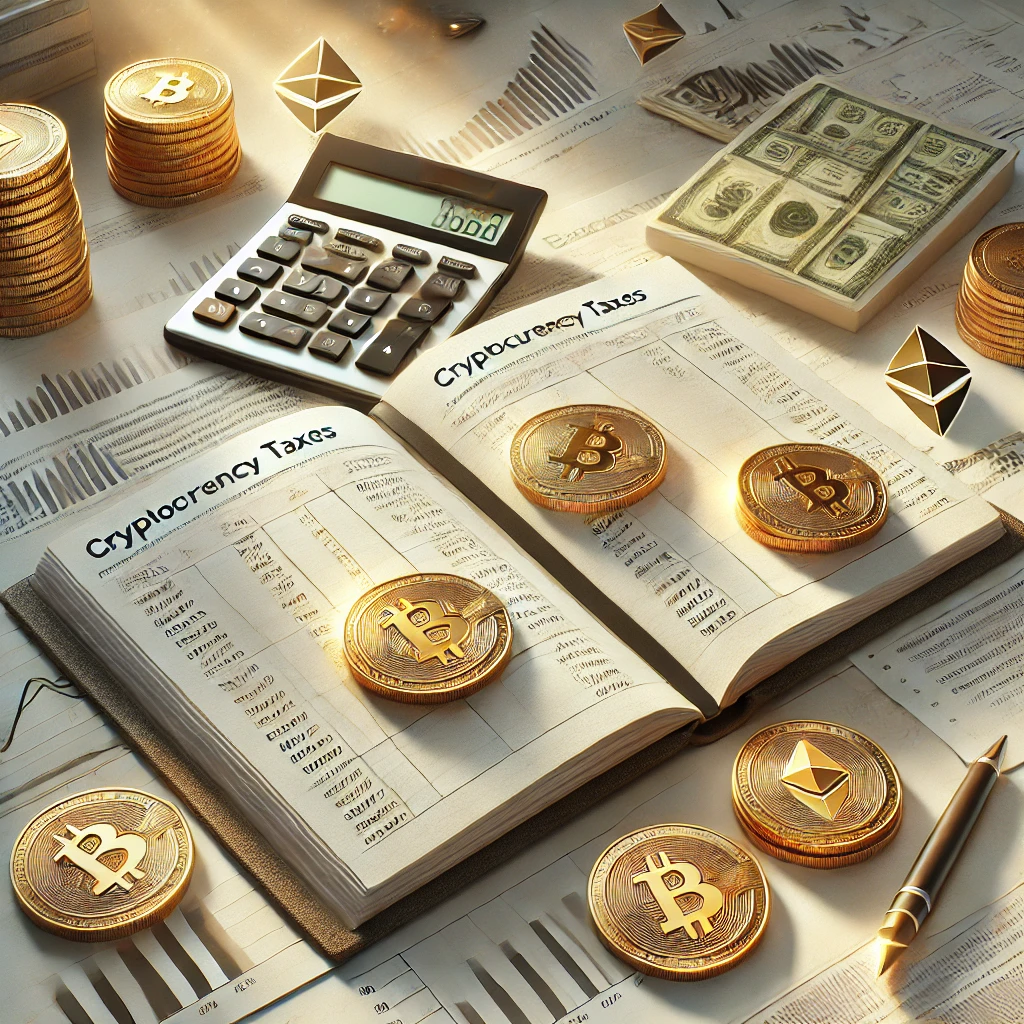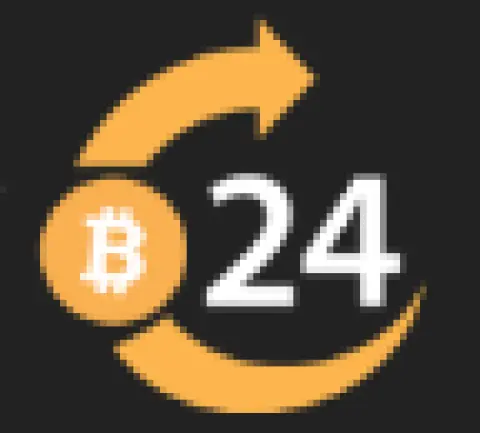Table of Contents:
How to Identify Crypto Wallets That Support PayPal Integration
Finding a crypto wallet that genuinely supports PayPal integration isn’t as straightforward as it might seem at first glance. There’s a lot of noise out there—plenty of platforms claim to offer PayPal support, but the reality is often more nuanced. Here’s how you can cut through the confusion and zero in on wallets that actually let you use PayPal for crypto transactions.
- Check Official Documentation: Don’t just trust a quick Google search or a Reddit thread. Go straight to the wallet’s official website or help center. Look for a dedicated section about payment methods or funding options. If PayPal is supported, it’ll be listed there—usually with details about how it works and any limitations.
- Look for Direct vs. Third-Party Integration: Some wallets offer direct PayPal integration, meaning you can buy or sell crypto using your PayPal account right within the wallet. Others rely on third-party services (like Simplex or MoonPay) that process PayPal payments on their behalf. The difference? Direct integration is typically smoother and faster, while third-party solutions might involve extra steps or fees.
- Verify Regional Availability: PayPal’s crypto features are not global. Even if a wallet advertises PayPal support, it may only work in certain countries. Always check the wallet’s regional restrictions and compare them with PayPal’s own crypto policies. This is a detail many users overlook, but it can make or break your experience.
- Assess User Reviews and Community Feedback: Sometimes, the best insights come from real users. Search for recent reviews or discussions on forums like BitcoinTalk, Trustpilot, or even Twitter. Pay special attention to comments about PayPal transactions—are users reporting smooth experiences, or are there frequent complaints about failed payments or account holds?
- Test with a Small Transaction: If you’re still unsure, try funding your wallet with a small amount via PayPal. This is the ultimate litmus test. Just make sure you’re comfortable with the wallet’s security and reputation before sending any funds.
By following these steps, you’ll avoid the classic pitfalls—outdated information, unsupported regions, or hidden third-party fees. The landscape changes fast, so always double-check before committing. In the end, a bit of extra diligence up front can save you a world of frustration later on.
Step-by-Step Guide: How to Buy Crypto with PayPal Using a Wallet
Ready to buy crypto with PayPal using a wallet? Let’s get straight to the nitty-gritty—no fluff, just the exact steps you need to follow. This process works for wallets that offer true PayPal integration, not those clunky workarounds. Here’s how you can do it, step by step:
-
1. Set Up and Verify Your Wallet Account
Open an account with your chosen crypto wallet. Complete all required identity verification steps—most reputable wallets won’t let you use PayPal until you’ve verified your identity. -
2. Link Your PayPal Account
Navigate to the wallet’s payment methods or funding section. Select PayPal and follow the prompts to connect your PayPal account. Sometimes, you’ll need to log in to PayPal and authorize the connection—watch for pop-ups or redirects. -
3. Choose the Cryptocurrency and Amount
Pick the crypto you want to buy (like Bitcoin, Ethereum, or whatever’s available). Enter the amount you wish to purchase. Double-check the exchange rate and any wallet-specific limits before proceeding. -
4. Confirm Fees and Review the Transaction
Before you hit “Buy,” review all fees—PayPal’s, the wallet’s, and any network fees. Make sure you’re comfortable with the total cost. Sometimes, the final amount you receive may be slightly less due to real-time price fluctuations. -
5. Authorize and Complete the Purchase
Approve the transaction. You may be redirected to PayPal for final confirmation. Once authorized, the wallet will process your purchase and credit your crypto balance—usually within minutes, but sometimes it takes a bit longer depending on network congestion. -
6. Secure Your Assets
After the crypto lands in your wallet, consider moving it to a more secure storage option if you’re not planning to trade immediately. Enable two-factor authentication for extra peace of mind.
That’s it—no complicated detours. If you follow these steps, you’ll avoid common mistakes and get your crypto with PayPal smoothly. Just remember: every wallet’s interface is a bit different, so keep an eye out for unique prompts or requirements along the way.
Best Crypto Wallets Currently Accepting PayPal – A Comparative Overview
Best Crypto Wallets Currently Accepting PayPal – A Comparative Overview
It’s not exactly a walk in the park to find crypto wallets that truly accept PayPal, but a handful of options do stand out. Below, you’ll find a focused comparison of the most reputable wallets that support PayPal for crypto purchases or withdrawals, highlighting their unique features, supported coins, and quirks that could make or break your decision.
-
eToro Money Wallet
eToro’s wallet integrates directly with PayPal for both deposits and withdrawals. It supports a wide range of cryptocurrencies, including Bitcoin, Ethereum, and Litecoin. What’s really handy is the seamless transfer between your eToro trading account and the wallet. However, the selection of coins is somewhat curated, and withdrawals to PayPal are subject to eToro’s own review process, which can occasionally slow things down. -
Coinbase
Coinbase allows users in select regions to cash out crypto directly to PayPal. The platform is famous for its intuitive interface and robust security. While you can’t always buy crypto with PayPal on Coinbase, the withdrawal feature is a lifesaver for those wanting fiat liquidity. The main catch? PayPal withdrawals are limited to certain countries, and the list of supported coins for this feature is shorter than Coinbase’s overall offering. -
BitPay
BitPay’s wallet supports PayPal as a payment method through its partnership with Simplex. This means you can buy Bitcoin and a few other major coins using PayPal, though the process involves a third-party and can sometimes feel a bit clunky. The upside is BitPay’s global reach and support for both personal and business users. On the flip side, transaction fees may be higher due to the intermediary. -
MetaMask (via third-party providers)
MetaMask itself doesn’t natively support PayPal, but through integrated services like MoonPay or Transak, users can purchase Ethereum and other assets using PayPal. This workaround is especially popular among DeFi enthusiasts. The trade-off? You’re relying on external providers, so the user experience and fee structure can vary widely.
Each wallet has its own sweet spot—whether it’s eToro’s all-in-one approach, Coinbase’s simplicity, BitPay’s business-friendly angle, or MetaMask’s flexibility for advanced users. Your best choice will depend on your location, preferred coins, and how much you value direct integration versus third-party solutions. The landscape is evolving, so keep an eye out for new entrants and feature updates.
Real-World Example: Using PayPal with a Crypto Wallet
Real-World Example: Using PayPal with a Crypto Wallet
Imagine you’re sitting at your kitchen table, morning coffee in hand, and you decide to buy some Ethereum using PayPal. You choose Coinbase, since you’ve heard it supports PayPal withdrawals in your country. Here’s how it actually plays out in the wild, quirks and all:
- Initiating the Transaction: You log into Coinbase, navigate to the “Sell” section, and select Ethereum from your balance. After entering the amount to sell, you pick PayPal as your payout method. Instantly, you’re prompted to log into your PayPal account and confirm the connection. It’s a seamless handshake—no jumping through hoops or extra forms.
- Processing Time: After confirming, you receive a notification from both Coinbase and PayPal. The funds hit your PayPal account in under a minute. There’s a moment of hesitation—you check both accounts twice, but yes, the money is there. No mysterious delays, no “pending” status limbo.
- Unexpected Hiccups: But, here’s the kicker: PayPal instantly flags the incoming funds for review, since it’s a crypto-related transaction. You get an email about a routine check, and your funds are temporarily on hold for 24 hours. Annoying? Absolutely. But it’s standard practice for first-time crypto withdrawals via PayPal.
- Resolution and Takeaway: The next day, PayPal releases the funds without further questions. The whole process, minus the brief hold, is smooth. You realize that, while PayPal integration is convenient, you should always factor in the possibility of short-term holds—especially if you’re moving larger amounts or it’s your first time using this method.
This real-world scenario highlights the convenience and minor pitfalls of using PayPal with a crypto wallet. It’s not always instant gratification, but for many, the ease of use outweighs the occasional speed bump.
Fees, Limits, and Regional Availability When Using PayPal with Crypto Wallets
Fees, Limits, and Regional Availability When Using PayPal with Crypto Wallets
Hidden costs and restrictions can sneak up on you when you’re using PayPal with crypto wallets. Here’s what you need to know before you hit that “Buy” or “Withdraw” button:
-
Fee Structures Vary Wildly
PayPal charges a transaction fee for crypto-related payments, which can range from 1.5% to over 4% depending on the wallet and the type of transaction. Some wallets tack on their own service fees, so you might see a double whammy. Always check the fee breakdown at checkout—sometimes it’s buried in the fine print or only appears at the final confirmation step. -
Limits Can Be Frustratingly Low
Most wallets set daily, weekly, or even monthly caps on PayPal transactions. These limits can be as low as $100 per day for new users, while verified accounts might get access to higher thresholds. Don’t be surprised if you hit a wall just when you’re ready to make a big move—limits are often stricter for first-time PayPal transactions or high-risk regions. -
Regional Restrictions Are the Rule, Not the Exception
Not every country gets the same PayPal-crypto privileges. For example, users in the US and parts of Europe usually have more options, while residents in many Asian, African, or South American countries may find PayPal unavailable for crypto wallet transactions. Even within eligible countries, some features—like instant withdrawals—might be limited to certain states or provinces. -
Currency Conversion Surprises
If your PayPal account is in a different currency than your crypto wallet, expect an extra conversion fee. PayPal’s exchange rates aren’t always the most favorable, and the conversion fee can quietly eat into your total. This detail is easy to overlook but can make a noticeable dent in your returns. -
Temporary Holds and Delays
Large or unusual transactions may trigger PayPal’s risk checks, resulting in temporary holds. These aren’t technically fees, but they can delay access to your funds for 24-72 hours, especially if you’re a new user or the transaction looks out of the ordinary.
In short, using PayPal with crypto wallets is convenient, but you’ve got to read the fine print. Fees and limits can add up quickly, and regional quirks may block your plans altogether. Always double-check the latest terms before committing—what’s true today might change tomorrow.
Security Considerations When Connecting PayPal with Crypto Wallets
Security Considerations When Connecting PayPal with Crypto Wallets
- Beware of Phishing Attempts Scammers often mimic wallet or PayPal login pages to steal credentials. Always double-check URLs and never click on suspicious links in emails or pop-ups. If something feels off, it probably is.
- App Permissions and Data Sharing When you connect PayPal to a wallet, you may be granting access to certain personal data. Review app permissions carefully—some wallets request more information than necessary. Only proceed if you trust the wallet provider’s privacy practices.
- Monitor Linked Accounts Regularly Once your PayPal is linked, unauthorized transactions can slip by if you’re not vigilant. Set up alerts for both your PayPal and wallet accounts. Regularly review transaction histories to catch any odd activity early.
- Update Security Settings Frequently Security isn’t a one-and-done deal. Routinely update your passwords and review security questions. If your wallet or PayPal offers new security features—like biometric login or device management—enable them as soon as possible.
- Watch for API Vulnerabilities Integration between PayPal and wallets often relies on APIs. If either side has a vulnerability, your funds could be at risk. Stick to wallets with a proven security track record and look for recent third-party security audits.
- Be Cautious with Shared Devices Accessing your wallet or PayPal on public or shared devices increases your exposure to malware and session hijacking. Whenever possible, use only your own secured devices for transactions.
Taking these extra steps can make all the difference. The convenience of PayPal integration is great, but only if you keep your guard up—one lapse, and you could be dealing with a mess that’s tough to untangle.
Troubleshooting Common Issues with PayPal and Crypto Wallets
Troubleshooting Common Issues with PayPal and Crypto Wallets
- Failed Transaction Authorizations If your PayPal payment doesn’t go through, double-check that your PayPal account is in good standing and has sufficient funds or linked cards. Occasionally, wallets require you to re-authenticate or clear browser cache to refresh the payment connection.
- Account Linking Errors Sometimes, PayPal won’t link to your wallet due to outdated app versions or mismatched account details. Updating both apps and ensuring your name and email match exactly can resolve this. If the problem persists, try unlinking and relinking the accounts after a short wait.
- Unexpected Verification Requests Sudden prompts for extra verification can pop up, especially after large or unusual transactions. Have your ID and recent proof of address ready. Responding quickly to these requests helps avoid prolonged account restrictions.
- Transaction Not Reflected in Wallet If you’ve completed a PayPal payment but your crypto balance doesn’t update, check for processing delays or maintenance notices from the wallet provider. In rare cases, contacting customer support with transaction IDs speeds up resolution.
- Duplicate or Stuck Payments On rare occasions, payments may appear as pending or duplicate. Avoid retrying the transaction immediately. Instead, wait for confirmation or reversal—PayPal usually resolves these within 24 hours. Document all transaction details in case you need to escalate.
Addressing these issues promptly, with a methodical approach, often saves hours of frustration. If all else fails, reaching out to both PayPal and wallet support teams—armed with clear records—usually gets things back on track.
Alternatives If Your Favorite Wallet Doesn’t Accept PayPal
Alternatives If Your Favorite Wallet Doesn’t Accept PayPal
If your go-to crypto wallet skips PayPal support, you’re not out of luck—there are practical workarounds and other payment avenues that can get you to your goal without a hitch. Here’s what actually works in the real world:
- Use a Crypto Exchange as an Intermediary Many major exchanges accept PayPal for buying crypto. You can purchase your coins there, then transfer them to your preferred wallet. This two-step process is often faster than waiting for wallet integrations to catch up.
- Opt for Debit or Credit Card Payments Most wallets that don’t support PayPal will still accept Visa or Mastercard. Card payments are typically instant and widely available, so you can fund your wallet with minimal hassle.
- Bank Transfers and Instant SEPA For larger amounts or lower fees, direct bank transfers or SEPA payments (in Europe) are a solid choice. While not as quick as PayPal, they’re reliable and usually come with higher transaction limits.
- Peer-to-Peer (P2P) Marketplaces P2P platforms let you buy crypto directly from other users using a wide range of payment methods, including PayPal—even if your wallet doesn’t support it natively. Just make sure to use platforms with robust escrow and user rating systems for safety.
- Prepaid Crypto Vouchers Some services sell prepaid crypto vouchers online, which you can buy with PayPal and redeem in your wallet. This option is handy for small, quick purchases and doesn’t require linking accounts.
Each alternative comes with its own quirks—think about transaction speed, fees, and security before choosing. The good news? You’re never truly boxed in, even if your favorite wallet is slow to the PayPal party.
Summary: Getting the Most Out of PayPal with Crypto Wallets
Summary: Getting the Most Out of PayPal with Crypto Wallets
- Leverage Real-Time Notifications Enable instant alerts on both your PayPal and wallet apps. This lets you react immediately to any transaction anomalies or time-sensitive offers, which can be especially useful during volatile market swings.
- Utilize PayPal’s Dispute Resolution If you encounter a transaction error or suspect unauthorized activity, take advantage of PayPal’s buyer protection and dispute mechanisms. These tools can sometimes resolve issues faster than wallet support channels alone.
- Track Promotions and Cashback Opportunities Some wallets and exchanges periodically offer exclusive PayPal promotions, such as reduced fees or cashback on crypto purchases. Keeping an eye on these deals can help you maximize value with minimal extra effort.
- Optimize for Tax Reporting Maintain detailed records of your PayPal-crypto transactions. Many tax authorities require documentation of both fiat and crypto movements, and PayPal’s downloadable statements can simplify your annual reporting process.
- Experiment with Small Transactions First Before committing significant funds, test the integration with small amounts. This minimizes risk and helps you familiarize yourself with the process, interface quirks, and any hidden requirements unique to your wallet and region.
By staying proactive and attentive to these lesser-known strategies, you can unlock extra convenience, security, and even financial perks when using PayPal with crypto wallets—turning a basic payment option into a genuine advantage.
Experiences and Opinions
Nutzer berichten von unterschiedlichen Erfahrungen mit Krypto-Wallets, die PayPal unterstützen. Ein häufiges Problem: die tatsächliche Unterstützung von PayPal. Viele Anbieter behaupten, diese Funktion zu bieten, aber oft ist das nicht der Fall.
Ein Beispiel ist die Nutzung von PayPal für den Kauf von Bitcoin. Einige Anwender haben Schwierigkeiten bei der Transaktion. Laut ZDNET hat ein Nutzer berichtet, dass der Kaufprozess reibungslos begann, aber die Auszahlung von Bitcoin an eine externe Wallet war kompliziert. Die Wallet bot keine klare Anleitung, was frustrierend war.
Die Gebühren sind ein weiterer wichtiger Punkt. Einige Wallets erheben hohe Transaktionsgebühren, die Nutzer oft nicht vorhersehen. Anwender in Foren kritisieren dies häufig. Sie fordern mehr Transparenz über die Kosten im Voraus.
Nutzer äußern auch Bedenken zur Sicherheit. Wallets, die PayPal unterstützen, haben oft weniger Sicherheitsmerkmale. Anwender berichten von Unsicherheiten, ob ihre Daten und Kryptowährungen sicher sind. Viele empfehlen, Wallets mit zusätzlichen Sicherheitsfunktionen zu wählen.
Die Benutzeroberfläche ist für viele Anwender entscheidend. Nutzer bevorzugen Wallets, die intuitiv zu bedienen sind. Komplexe Designs schrecken viele ab. Einige Wallets bieten zwar PayPal-Integration, haben aber eine unübersichtliche Benutzeroberfläche. Das führt dazu, dass Nutzer sich nicht wohlfühlen.
Ein typisches Szenario: Nutzer möchten schnell und einfach Bitcoin kaufen und verkaufen. Wenn die Wallet jedoch nicht benutzerfreundlich ist, kann dies zu Frustration führen. Anwender in Diskussionen betonen, dass eine einfache Bedienung für den Einstieg in die Krypto-Welt entscheidend ist.
Ein weiteres häufig genanntes Problem: die Unterstützung von Kundenservice. Nutzer haben berichtet, dass viele Wallets langsame Reaktionszeiten haben. Wenn Probleme auftreten, dauert es oft lange, bis eine Lösung angeboten wird. Anwender wünschen sich schnellere Hilfe bei Fragen oder Problemen.
Zusammenfassend lässt sich sagen, dass die Integration von PayPal in Krypto-Wallets viele Vorteile bietet. Aber die Nutzererfahrungen zeigen auch, dass viele Wallets noch Verbesserungsbedarf haben. Sicherheit, Gebühren und Benutzerfreundlichkeit sind entscheidend für Nutzer. Die richtige Wahl kann den Einstieg in die Krypto-Welt erleichtern, aber oft sind die Erwartungen nicht erfüllt.
FAQ: Using PayPal with Crypto Wallets
Which crypto wallets allow PayPal integration?
Popular wallets that currently support PayPal include eToro Money Wallet, Coinbase (for select regions), BitPay via Simplex, and MetaMask through third-party providers like MoonPay and Transak. Availability and features may vary based on your location and the wallet's partnerships.
Can I buy any cryptocurrency with PayPal using these wallets?
No, not every cryptocurrency is available for purchase with PayPal. Most wallets limit purchases to popular coins such as Bitcoin, Ethereum, and Litecoin when using PayPal as a payment method. Always check the wallet's current list of supported coins for PayPal transactions.
Are there any fees when using PayPal with crypto wallets?
Yes, using PayPal with crypto wallets typically incurs additional fees. These may include PayPal’s own transaction fees (usually between 1.5% and 4%), wallet service charges, and network fees. Some platforms also apply extra charges for currency conversion if accounts are in different currencies.
Are there regional restrictions for PayPal crypto services?
Yes, PayPal integration for crypto wallets is only available in select countries. Both PayPal and the wallet provider must operate within your jurisdiction and support crypto transactions in your region. Check eligibility before attempting any transactions.
How can I keep my accounts secure when linking PayPal to a crypto wallet?
To maximize security, enable two-factor authentication on both your PayPal and wallet accounts, only connect services through official apps or websites, monitor all transactions closely, and beware of phishing attempts or suspicious links. Regularly update security settings and avoid accessing your accounts from shared or public devices.











